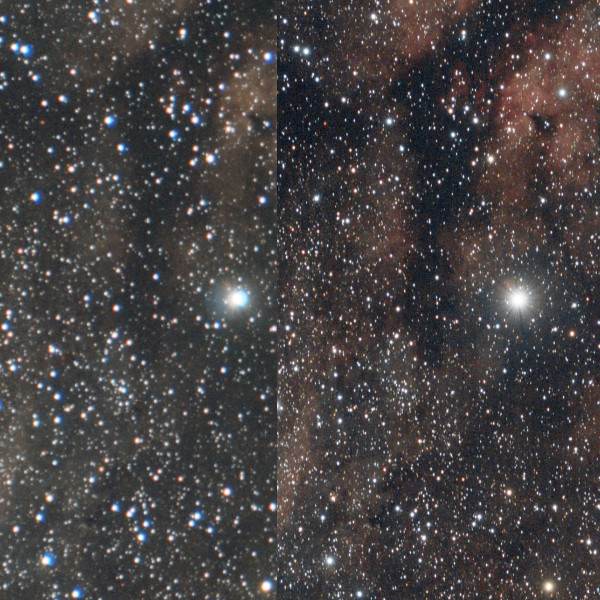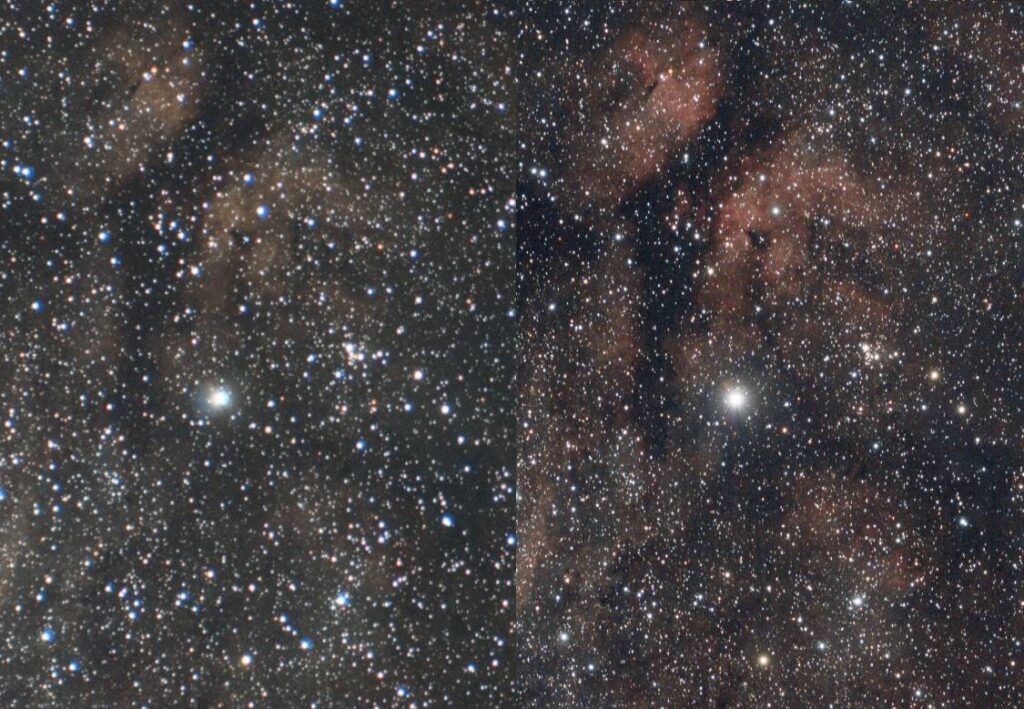
I’ve had a hard time getting my last photo session with the Canon 75-300mm f/4-5.6 lens out of my head. The lure of 300mm is just so tempting. But was I being too hard on the Canon lens during the previous session? I decided to load up the Samyang 135mm and image the same region. Obviously, the Samyang lens doesn’t have nearly the magnification of the Canon lens. However, when comparing photos of Sadr, is the difference really that significant? Tonight I’ll share some quick observations when analyzing 2 different pictures of Sadr taken with 2 different lenses.
Comparing Apples to Grapes
I thought at first that I’d set the Samyang up the same way I set the Canon up. But a different night and different conditions required some modifications to my setup. The additional integration time with the Samyang lens will certainly improve the quality of the nebulosity of the Sadr region. But I’m really interested in the quality of the stars. If anything, I’m pushing the Samyang test a little more aggressively than I pushed the Canon test.
| Setting | Canon 75-300mm f/4-5.6 | Samyang 135mm f/2 |
|---|---|---|
| Filter | Optilong L-Pro | Optilong L-Pro |
| Focal Length | 300mm (480mm apparent) | 135mm (216mm apparent) |
| Aperature | f/5.6 | f/4 |
| ISO | 3200 | 1600 |
| Exposure | 30 seconds | 45 seconds |
| Integration | 95.5 minutes | 153.8 minutes |
Comparing Sadr Photos Side-By-Side
I used Siril to stack both sets of photos and ran the same processing routines on each resulting image. I brought both images into GIMP and scaled the Samyang 135mm image to match the Canon 300mm scale.

I could probably draw my analysis out quite a bit but I believe the differences between the two photos are pretty obvious. The stars in the Canon lens image appear very bloated compared to the Samyang lens image. Also, the chromatic aberration and the coma that I previously wrote about with the Canon lens are completely absent in the Samyang image. Overall, the Samyang lens delivered a much sharper image than the Canon lens.
Not much else to say on this topic. I think the side-by-side comparison is conclusive.
